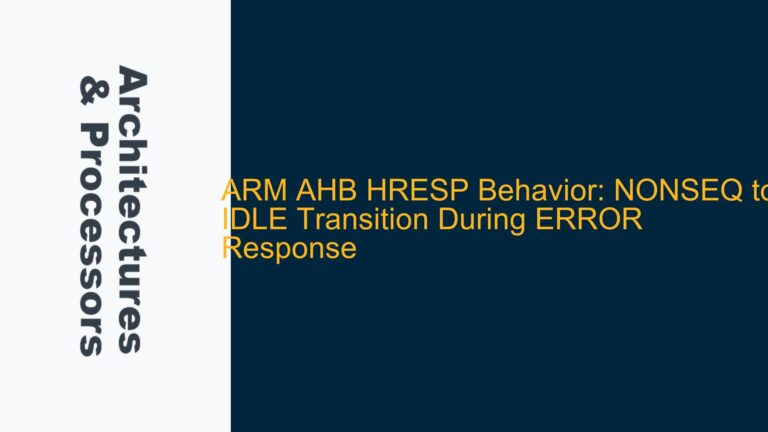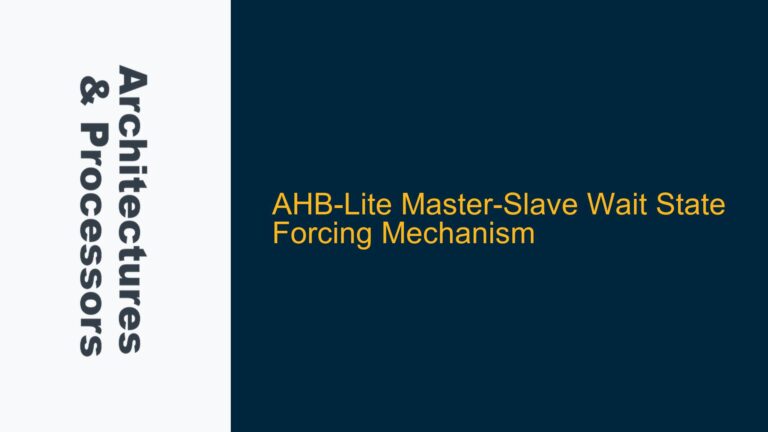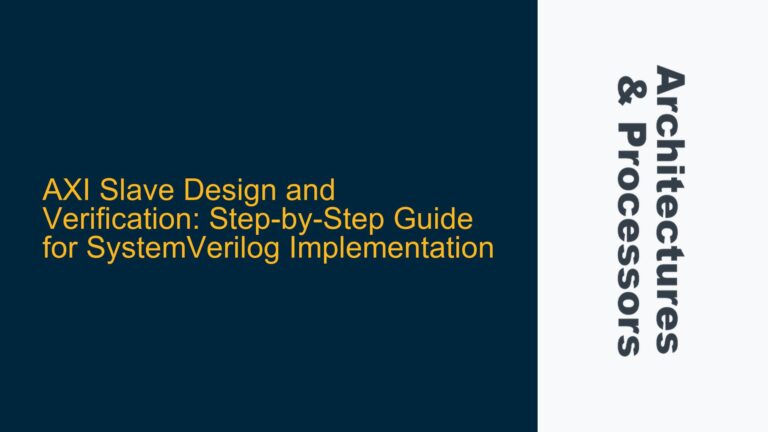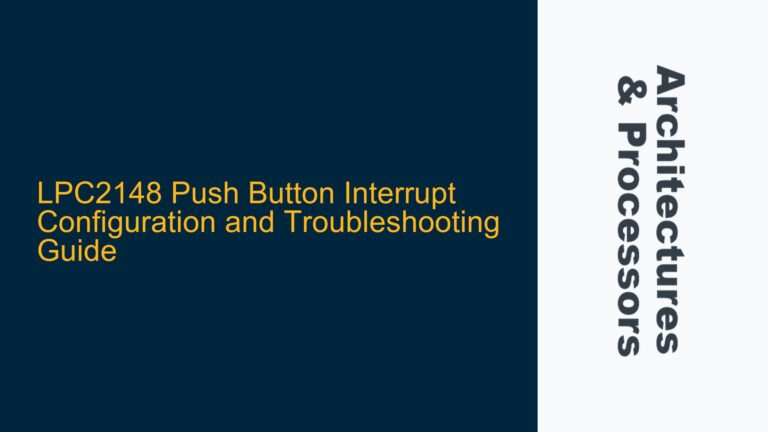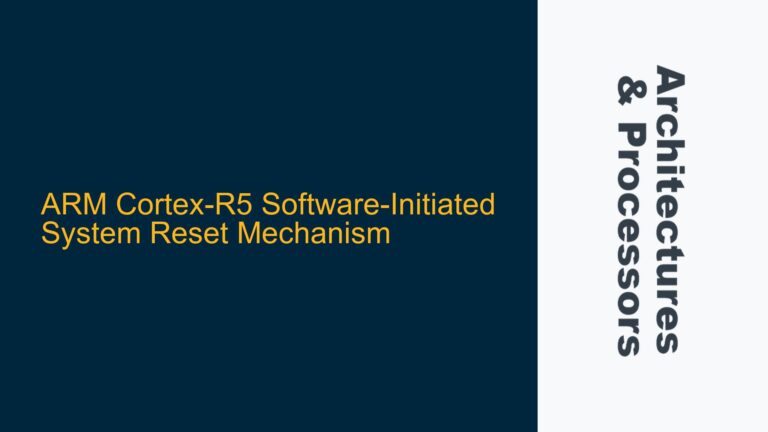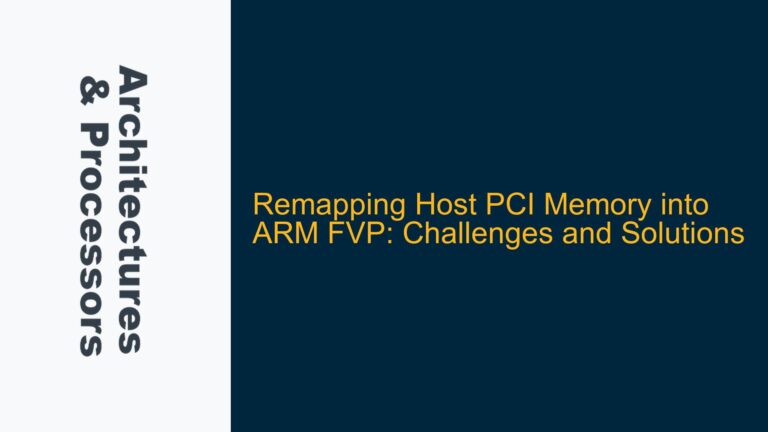AMBA AHB Lite Four-Beat Wrapping Burst Address Sequence Anomaly
The AMBA AHB Lite protocol is widely used in ARM-based SoC designs for its simplicity and efficiency in handling data transfers between masters and slaves. One of the key features of AHB Lite is its support for burst transfers, which allow multiple data transactions to occur in a sequence without the need for repeated address phase signaling. Among the burst types, the wrapping burst is particularly interesting due to its unique address generation behavior. In a four-beat wrapping burst, the address sequence does not follow a straightforward increment pattern but instead wraps around a specific boundary. This behavior can be confusing, especially when observing the address transitions in a timing diagram.
In the case of a four-beat wrapping burst with a word-sized transfer (HSIZE = Word, i.e., 4 bytes), the address sequence appears to decrease after reaching a certain point instead of continuing to increment. For example, starting from address 0x3C, the sequence transitions to 0x30 instead of 0x40. This wrapping behavior is not an error but a deliberate feature of the AHB Lite protocol designed to optimize memory access patterns, particularly for circular buffers and other data structures that benefit from address wrapping.
The confusion arises from the interaction between the burst type (WRAP4), the transfer size (HSIZE = Word), and the address boundary calculation. The address boundary is determined by multiplying the number of beats in the burst (4) by the transfer size (4 bytes), resulting in a 16-byte boundary. The address sequence wraps within this 16-byte window, ensuring that the burst remains aligned to the boundary. This behavior is critical for maintaining coherency and efficiency in memory access, especially in systems with multiple masters and slaves.
Wrapping Burst Address Boundary Calculation and Alignment
The wrapping behavior in AMBA AHB Lite is governed by the relationship between the burst type, transfer size, and address boundary. For a four-beat wrapping burst (HBURST = WRAP4) with a word-sized transfer (HSIZE = Word), the address boundary is calculated as follows:
Address Boundary = Number of Beats × Transfer Size
Address Boundary = 4 × 4 bytes = 16 bytes
This 16-byte boundary defines the window within which the address sequence wraps. The start address of the burst must be aligned to this boundary. In the example provided, the start address is 0x30, which is aligned to a 16-byte boundary (0x30, 0x40, 0x50, etc.). The address sequence for the four-beat wrapping burst is:
- T1-T2: Address = 0x3C
- T2-T3: Address = 0x30
- T3-T4: Address = 0x34
- T4-T5: Address = 0x38
The address wraps from 0x3C to 0x30 because 0x3C is the last address in the 16-byte window (0x30 to 0x3F). The next address in the sequence wraps back to the start of the window (0x30) instead of incrementing to 0x40. This wrapping ensures that the burst remains within the defined boundary, which is essential for maintaining alignment and avoiding memory access violations.
The alignment requirement also has implications for system design. For example, if a master initiates a wrapping burst with a start address that is not aligned to the calculated boundary, the behavior of the system may be undefined or result in incorrect data transfers. Therefore, it is critical to ensure that all wrapping bursts are properly aligned to their respective boundaries.
Implementing and Verifying Wrapping Burst Behavior in AHB Lite Designs
To correctly implement and verify the wrapping burst behavior in an AMBA AHB Lite design, the following steps should be taken:
-
Address Boundary Calculation: Ensure that the address boundary is correctly calculated based on the burst type and transfer size. For a four-beat wrapping burst with a word-sized transfer, the boundary is 16 bytes. The start address of the burst must be aligned to this boundary.
-
Address Sequence Generation: Implement logic to generate the correct address sequence for wrapping bursts. The address should increment within the boundary and wrap back to the start of the boundary when the end is reached. For example, for a start address of 0x30, the sequence should be 0x30, 0x34, 0x38, 0x3C, and then wrap back to 0x30.
-
Verification of Wrapping Behavior: Use simulation to verify that the address sequence adheres to the wrapping rules. Create test cases that cover various start addresses, burst types, and transfer sizes. Ensure that the address sequence wraps correctly and that the data transfers are accurate.
-
Alignment Checks: Implement checks to ensure that all wrapping bursts are properly aligned to their respective boundaries. This can be done using assertions in the RTL code or through simulation checks. Any misalignment should be flagged as an error.
-
Corner Case Testing: Test edge cases, such as bursts that start at the boundary address or bursts that cross multiple boundaries. Ensure that the system handles these cases correctly and that the address sequence wraps as expected.
-
Performance Optimization: Analyze the impact of wrapping bursts on system performance. Wrapping bursts are particularly useful for circular buffers and other data structures that require repeated access to a fixed memory region. Optimize the design to take advantage of this behavior and minimize latency.
By following these steps, designers can ensure that their AMBA AHB Lite implementations correctly handle wrapping bursts and adhere to the protocol specifications. Proper verification is essential to avoid issues such as incorrect data transfers, memory access violations, and performance bottlenecks.
Detailed Example of Address Wrapping in a Four-Beat Wrapping Burst
To further illustrate the concept of address wrapping in a four-beat wrapping burst, consider the following example:
- Burst Type: WRAP4 (four-beat wrapping burst)
- Transfer Size: Word (4 bytes)
- Start Address: 0x34
The address boundary is calculated as:
Address Boundary = 4 beats × 4 bytes = 16 bytes
The 16-byte window for this burst is from 0x30 to 0x3F. The start address (0x34) is within this window but not aligned to the boundary. However, the wrapping behavior still applies within the window. The address sequence for this burst is:
- T1-T2: Address = 0x34
- T2-T3: Address = 0x38
- T3-T4: Address = 0x3C
- T4-T5: Address = 0x30
Notice that the address wraps from 0x3C to 0x30, even though the start address was not aligned to the boundary. This demonstrates that the wrapping behavior is determined by the boundary window, not the start address alignment. However, it is still recommended to align the start address to the boundary to avoid potential issues.
Common Pitfalls and Debugging Tips
When working with wrapping bursts in AMBA AHB Lite, designers may encounter several common pitfalls:
-
Misaligned Start Addresses: If the start address is not aligned to the calculated boundary, the address sequence may not wrap correctly, leading to incorrect data transfers. Always ensure that the start address is aligned to the boundary.
-
Incorrect Address Sequence Generation: Errors in the logic that generates the address sequence can result in incorrect wrapping behavior. Verify the address sequence using simulation and compare it against the expected sequence.
-
Boundary Calculation Errors: Incorrect calculation of the address boundary can lead to improper wrapping behavior. Double-check the boundary calculation to ensure it is based on the correct burst type and transfer size.
-
Verification Gaps: Incomplete verification can miss edge cases and corner cases, leading to undetected issues. Ensure that the verification plan covers all possible scenarios, including misaligned start addresses and bursts that cross multiple boundaries.
To debug these issues, use simulation tools to trace the address sequence and compare it against the expected behavior. Add assertions to the RTL code to catch misalignments and incorrect address sequences. Analyze the waveform to identify any discrepancies and trace them back to the source of the error.
Conclusion
Understanding the wrapping behavior in AMBA AHB Lite four-beat wrapping bursts is essential for designing and verifying efficient and reliable ARM-based SoCs. The address wrapping feature optimizes memory access patterns for circular buffers and other data structures, but it requires careful implementation and verification to ensure correctness. By following the guidelines outlined in this post, designers can avoid common pitfalls and ensure that their AHB Lite implementations adhere to the protocol specifications. Proper verification, including corner case testing and alignment checks, is critical to achieving robust and high-performance designs.

